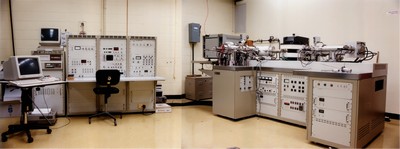Finding oil is a challenging game of chance. One way to improve your chances is to better understand the systems that generate commercial oil fields. Such understanding has been much improved over the past decades by biomarker studies in the field of petroleum geochemistry - biomarkers are hydrocarbon compounds found in crude oils and source rocks, best described as molecular chemical fossils, and are alteration products of compounds made by living organisms.
Some biomarkers are unique and specific to sedimentary environments, source rocks, and crude oils, making them extremely useful clues to solving oil-source riddles. Owing to the complexity and range of biomarkers, sophisticated techniques are needed to identify them. That is where the GC-MS-MS comes in - it is a gas chromatograph attached to two additional mass spectrometer analysers in tandem, resulting in a system that provides the required resolving power.
The Geological Survey of Canada's office in Calgary obtained one of the first of these machines in 1987, enabling new and better oil-source correlations and providing key information on the nature and origin of the oil sands and more. The success of the original machine has yielded newer, all-digital replacement machines.
Category: Equipment and Instrumentation
Decade: 1980s
References


